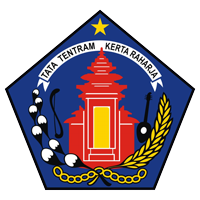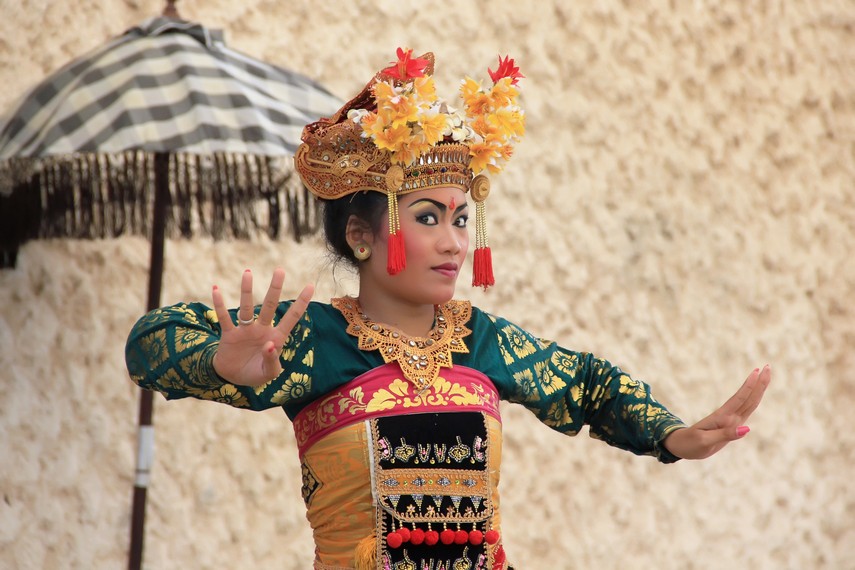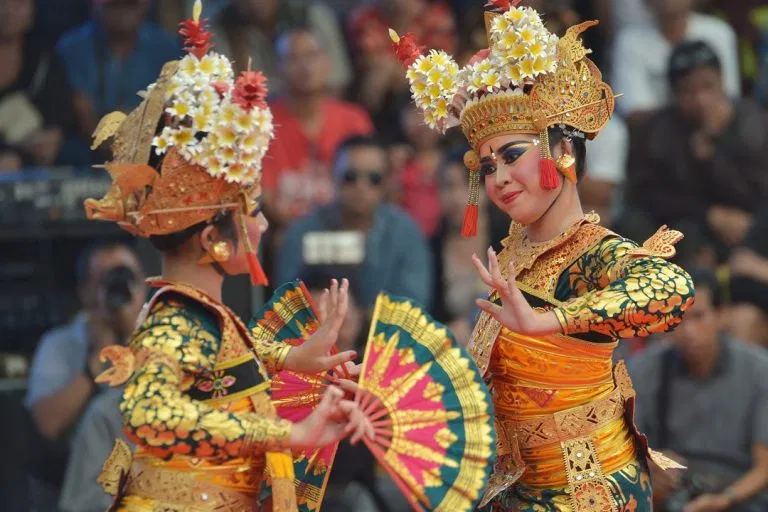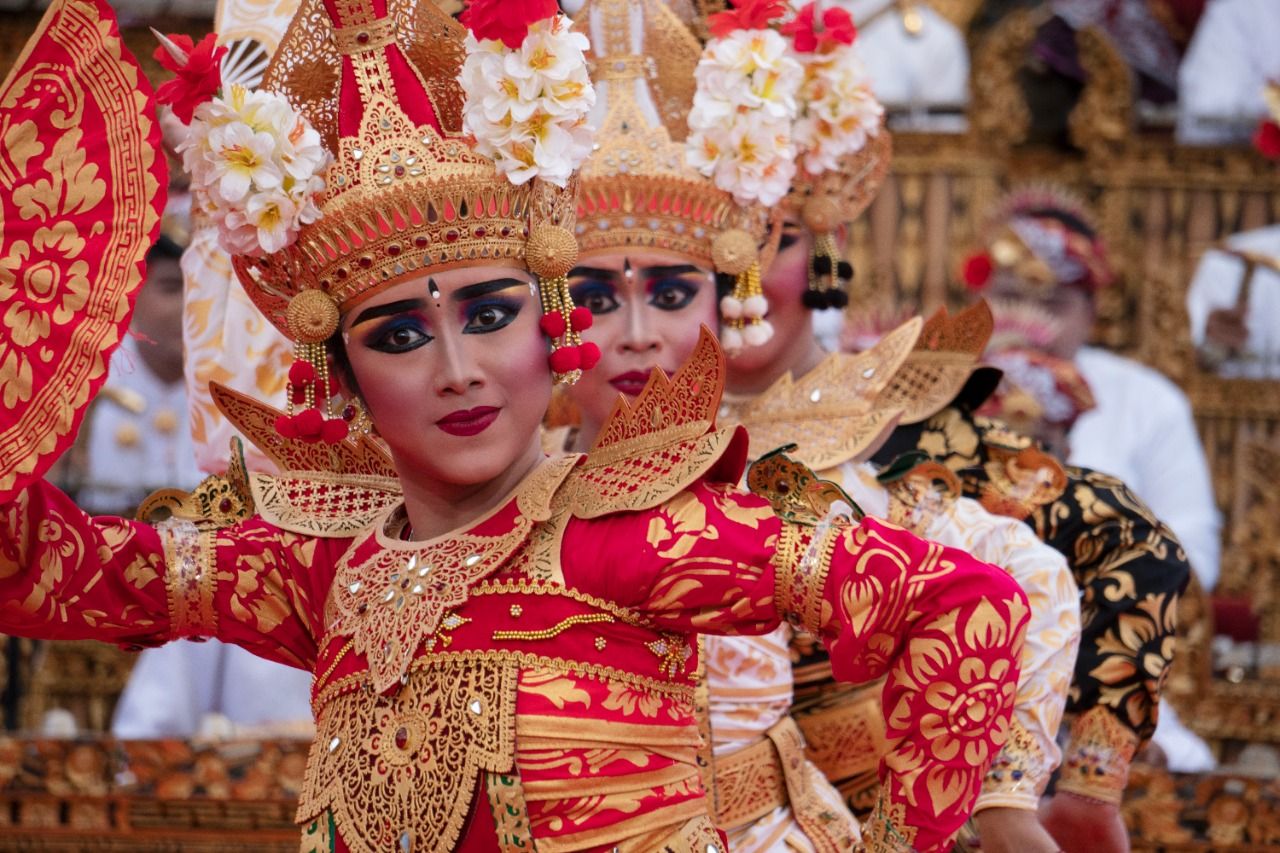Desa wisata sukawati
About The Village
-
Village Name
-
Village Code
-
Subdistrict
-
Subdistrict Code
-
Regency
-
Regency Code
-
Province
-
Province Code
-
Postal code
Sukawati
5104012004
Sukawati
510401
Gianyar
5104
Gianyar
51
80582
History Sukawati Village
Sukawati Village was originally a Timbul Forest. According to Babad Timbul Sukawati, the transformation of the emerging forest into Sukawati Village is told as follows In around the 18th century, an area under the rule of the Mengwi Kingdom consisting of rural pocket groups including; Cahu Pegambangan, Abasan, Langge and Laud was hit by a “gring grubug” epidemic which caused countless casualties.
The disaster was caused by the “Pangrista” whose spiritual knowledge was Ki Balian Batur who lived in the teledu nginyah/karangkadangkan forest, Ki Balian Batur came from the Sengghu Wintang Danu family (Lake Batur Valley).
Dalem was pleased to grant the request of the King of Mengwi, and sent his son I Dewa Agung Anom to kill Ki Balian Batur with the Heirloom Weapon Ki Sliksik Narantaka. Long story short, Ki Balian Batur fell along with his family and all his men.
As a reward, King Mengwi asked Dalem, so that his son I Dewa Agung Anom be allowed to be appointed as King in Bumi Timbul, upon that request Dalem agreed, I Dewa Agung Anom also upheld the command of his father Dalem.
As a devotee Tjokorda Sakti Belambangan presented the areas to the west of the Pakerisan River, to the east of the Ayung River stretching from the edge of Segara Kidul to the north to the foot of Mount Batur, to become the territory of the Bumi Timbul Kingdom.
During the Great Work of Ngenteg Linggih and Pamungkah at the Penataran Agung Temple, a crowd was held for 1 month and 7 days. Many “pengalu” came and chose to settle in Bumi Timbul because they really liked the sound of the gamelan that was played all day long. They always felt happy, by paying attention to the voice of the people’s conscience.
Dalem agreed to change the name Timbul to sukaadnyana, which was translated as Sukaati. In further developments, the pronunciation changed to Sukawati until now.
Location
Sukawati Tourism Village is located in Sukawati District, Gianyar Regency, Bali. Located about 100 -200 m above sea level.
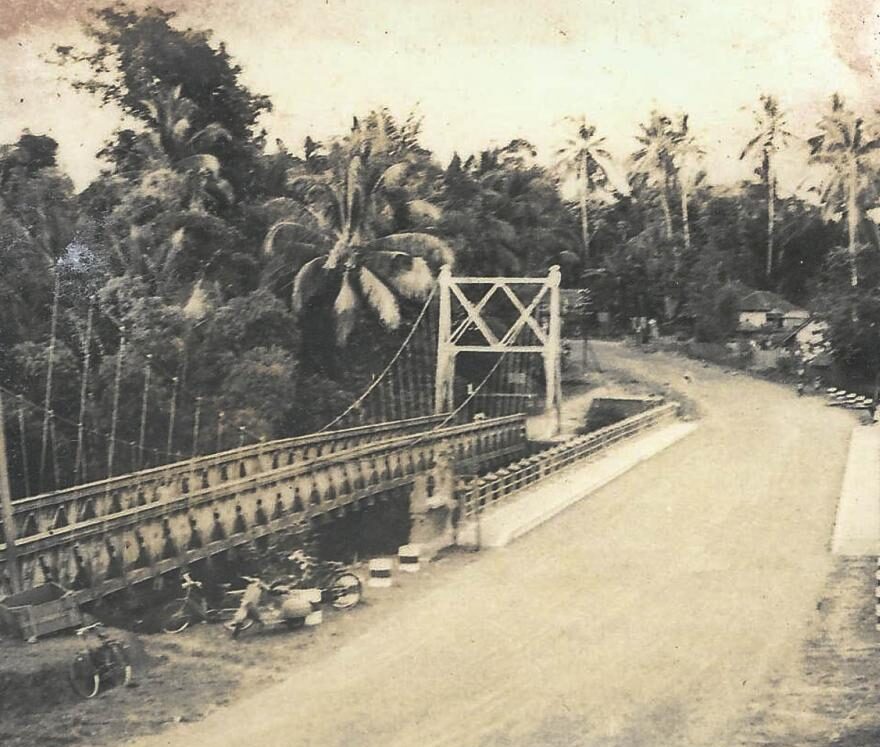
Consisting of 13 administrative hamlets and 14 customary hamlets:
- Br. Gelumpang
- Br. Telabah
- Br. Palak
- Br. Tebuana
- Br. Delod Tangluk
- Br. Babakan
- Br. Gelulung
- Br. Kebalian
- Br Delod Pangkung
- Br. Tameng
- Br. Bedil
- Br. Pekuwudan
- Br. Mudita
Bordered by Batuan Village to the north, Saba Village to the east, Guwang Village to the south, and Celuk Village to the west. Access to Sukawati Village is very easy because its strategic location is approximately 17 km from Denpasar City, while from Ubud it is approximately 14 km. If riding a motorbike, the travel time required is 25-30 minutes, both from Denpasar and Ubud.
The topography of Sukawati Village is flat from the north to the south as the concept of upstream and downstream, then from the east it is also bordered by the Petanu River, while in the west it is bordered by the Wos River, however, access via village roads is also in good condition.
Desa Wisata Sukawati
Sukawati is home to luscious culinary journeys, pristine rice fields, and stunning beaches. It’s also renowned for its vibrant art markets, where genuine local artisans craft everything from intricate sculptures to beautiful wood carvings.
Sukawati Village is basically an agricultural area besides trade, home industry, services and also rich in arts including; percussion, dance, puppetry, carving, architecture and silver crafts.
The structure of society and agrarian culture inspired by the belief in Hinduism is a very strong or fundamental basis for the life of the village community, especially now with the presence of the Sukawati Art Market making Sukawati Village famous abroad
Sukawati Village
Escape the hustle and bustle of the City,to have a look the beauty of the ancient ‘ Pura Desa Sukawati. You can also witness the grandeur and beauty of this temple from its magnificent Candi Bentar building, which is made of red brick combined with hard stone, made by the famous sculptor from Sukawati, Mr. I Wayan Rajeg. Exploring and learning further details of ‘’ Legong Kraton dance, Wayang performance, traditional gamelan, gender music, and finally immerse yourself at the ‘’ Taman rekreasi Sukawati, lay down and get the sun burn at the swimming pool, enjoy the food and beverage with personalize services. Do not miss out on this once in the live time adventure -book your tour by today.
Story
Legong Keraton
Legong Dance History
This Legong Dance has existed since ancient times which is thought to have been created and developed at the end of the 19th century which is more often performed in the kingdom to entertain the king or royal guests. On the island of Bali, this Legong Dance is called the Legong Keraton because this dance was only performed in the kingdom in the past.
The beginning of the Legong Dance in Bali started with a King of Sukawati with name I Dewa Agung Made Karna who reigned 1775-1825 AD, It is told that one time he was doing penance at Jogan Agung Temple, Ketewel village (Sukawati area) and he dreamed of seeing an angel dancing in heaven wearing a headdress made of gold.
The angel danced gracefully with very beautiful movements and every curve of the dance required a very perfect beauty. And finally he woke up from his dream and immediately headed to the kingdom and ordered the nagging bendesa to make some masks similar to the angels in his dreams and also ordered some expert dancers to make dance moves similar to the dances performed by the nymphs.
And the mask work was completed and nine sacred masks were made according to the request of the king Sukawati, and finally the first dance performance was performed under the name Sang Hyang Legong at the Jogan Agung temple where he performed penance and dreamed of dancing angels, the performance was performed by two dancers. women who have not menstruated, who are still pura.
Meaning of the word Legong
If you look at the meaning of the word Legong which comes from two syllables, namely “Leg” which means a dance movement that is flexible and flexible and the word “gong” which means a Balinese musical instrument called gamelan that accompanies this flexible dance movement.
So the word Legong can be interpreted with the meaning of flexible dance movements accompanied by beautiful gamelan music. The gamelan that accompanies this Legong Dance is Semar Pagulingan.
At first this Legong Dance was danced by 2 female dancers, where the dancers had not menstruated, and were performed under the light of the full moon which made the scenery very enchantingly beautiful with the characteristics of dancers who use traditional fans, and there are also some additional dancers who do not wear fans. called “inclined”. In the development of this era, the Legong Dance had lost its popularity which was defeated by other dances, so that a revitalization effort was carried out in 1960 so that this Legong Dance could be preserved and survived to this day, where we can still see this Legong Dance today.
Stroyline Legong Dance Performance
At first, the Legong dance was a type of dance, but in later developments, the dance movements were positioned based on one of the dances in the gambuh. When viewed from the vocabulary of motion, it seems that the intricate movements contained in the Legong dance have been perfected and adjusted dynamically, so that it becomes Legong as it is today.
The dance movements in pelegongan are very beautiful, although in the end behind the movements hidden dramatic movements, and along with the development of the era and tourism, there are many variants of this Legong dance which was developed for tourism purposes so that there are many Legong dances that are used for tourism purposes. adopt stories from very famous wayang, and some also adopt stories from ancestral times.
Legong Keraton: This dance takes the basic story from the Panji story which is found in the 12th and 13th centuries which tells the story of King Lasem who was going to propose to the daughter of the Daha kingdom named Rangeksari but the princess refused because she was bound by Raden Panji from Kahuripan, finally King Lasem did a disgraceful thing by kidnapping the princess and this kidnapping was known by the King of Kediri who was the sister of the princess and he declared war and left for the kingdom of Lasem. This was known by the king of Lasem and went to the battlefield, but before arriving on the battlefield King Lasem was intercepted by the Garuda bird who came to help free the princess, a fierce battle took place between King Lasem and the Garuda bird, which was finally won by the Garuda bird and the king of lasem managed to escape to the kingdom. And arriving at the kingdom, the King of Kediri had come with his troops and the battle broke out and because the previous king of Lasem was seriously injured and fought the troops of the King of Kediri which finally made the King of Lasem die and this battle was won by the King of Kediri who finally freed the princess and took over lasem kingdom.
